How to grow balsam seedlings at home?
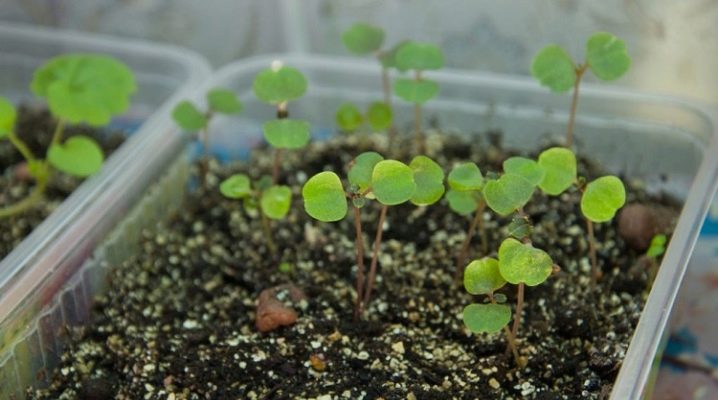
Balsam is one of the most popular garden plants. It is widely distributed in the temperate and tropical regions of Europe, Asia, North America and Africa. The variety of species and varieties allows it to be cultivated in various regions of our country, both at home and on the street. At the same time, the cultivation of balsam through seedlings is popular.
Peculiarities
Balsams belong to the family of annual and perennial herbaceous plants, sometimes they are semi-shrubs. They cannot be called unpretentious when growing seedlings, since there are certain rules to get a good result. If you follow them, then balsams will be able to please even a novice grower with flowering.
There are a lot of balsam varieties. They are grown both as indoor and garden plants. The timing of planting and the features of care largely depend on the variety: fertilization, loosening, watering. At home, seedlings need to create a comfortable environment for preparing their planting in open ground. Balsamines can have jagged or rounded leaves in various shades of green. The fruit is a polyspermous capsule. If you touch it, then it opens easily, and the seeds fall out.
The color range of balsams is very diverse. White, pink and red specimens are popular. Flower petals can be smooth, semi-double or double. Flowering does not occur together. It is often possible to see buds forming or blossoming flowers at the same time as wilted flowers.
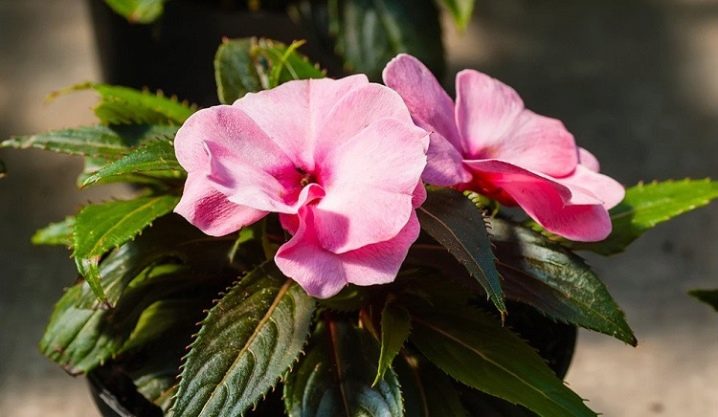
Sowing dates for seedlings
It takes 3 to 4 months to grow balsam seedlings from seeds. Fortified seedlings can be relocated to street beds when the threat of a return to subzero temperatures disappears. This period starts roughly in May. Given this fact, it is possible to calculate the time when it comes time to sow balsam for seedlings.
Usually in the southern regions, sowing takes place in the first half of February, and in central Russia in March.

How to plant with seeds?
Many varieties of balsam are planted with seeds for seedlings. A good result is obtained, using seeds originally from Siberia, Kuban and New Zealand seed material. The most popular ones are: Tom Tamb, Camellia, Super Elfin.
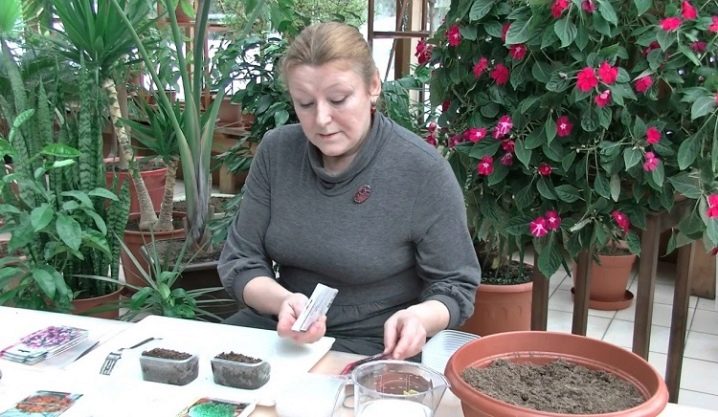
"Tom Tamb"
This variety has a highly growing bush and large flowers. The variety is suitable for the formation of flower beds, lawns, flower beds, street vases. The height of the Tom Tamb variety usually does not exceed 25 cm.
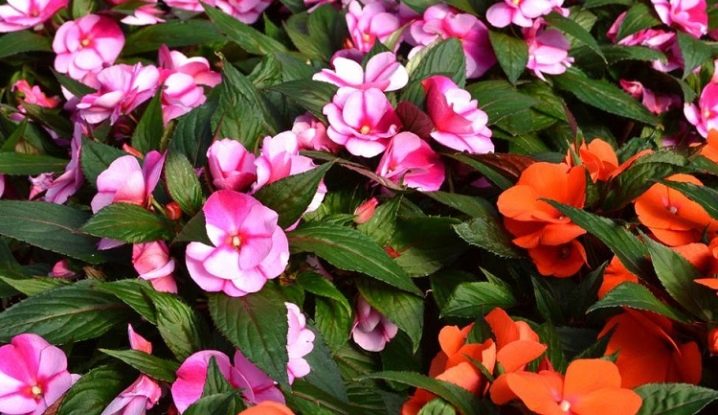
"Camellia"
One of the new varieties of garden balsams, which looks very impressive and features large double flowers. Often planted in mixed beds. The height of the bush reaches 25 cm, and the diameter of the flower can reach 4 cm.

"Super Elfin"
It is a dwarf balsam variety known to many as "Vanka wet". The variety is distinguished by its unpretentiousness and long flowering. Before sowing balsam seeds of any of the varieties for seedlings, you should properly prepare the soil. There are several options for its preparation.
For example, mix 1 part vermiculite, 1 part sand, 1 part leafy earth and 2 parts low-lying peat. You can also take only peat and vermiculite in equal shares.At the same time, it is not necessary to adhere to the exact proportions, but it is important that the substrate is loose, absorbs water well and allows air to pass through.
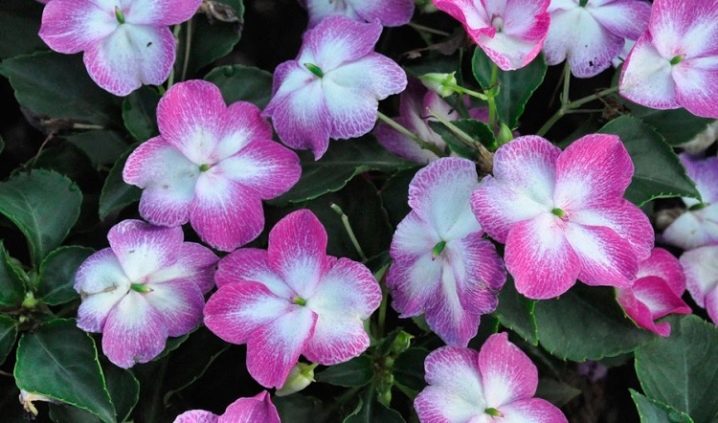
Then you can proceed directly to planting seeds.
- The seeds must be processed for several minutes in a weak manganese solution.
- Then they are soaked in warm water for 1 day.
- The sowing tray must be at least 8 cm.
- The bottom of the container must be perforated to drain excess liquid.
- The bottom of the tank is laid out with a drainage layer - expanded clay or fine gravel. The height of the drainage layer is 2 cm.
- Then prepared soil is poured into the container.
- To disinfect the soil, one day before planting, it is calcined in an oven or spilled with "Fitosporin".
- Seeds are deployed on the soil surface at a distance of 3-4 cm from each other. You should not sprinkle them on top with earth, because light is required for their germination.
- Then the already sown seeds are sprayed with water using a spray bottle.
- Above, a container with sown balsam seeds is covered with glass or foil, constructing a mini-greenhouse.
- The container with seeds is placed in a warm place and periodically ventilated by opening the film or moving the glass.
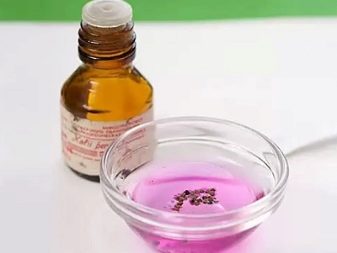
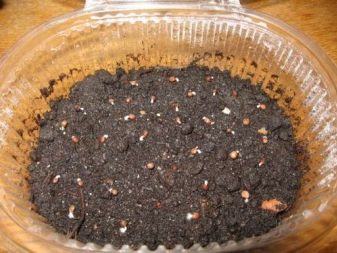
If there is not too much seed, it can be sown into peat tablets. After disinfection and soaking of seeds, planting is carried out as follows.
- The tablets are saturated with moisture until they swell completely.
- After that, seeds are sown on the surface of the soil one by one, they are not buried in depth, but simply gently pressed against the substrate with a toothpick or a match.
- Then the container is covered with plastic wrap and placed in a warm, bright place, avoiding direct sunlight.
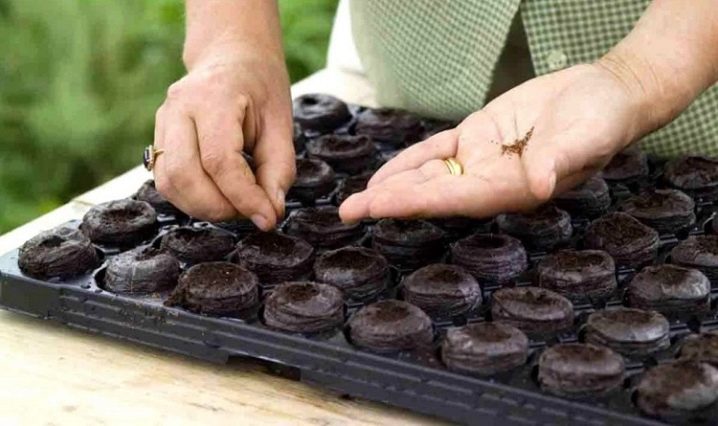
How many days does it rise?
While waiting for balsam seeds to sprout, it is important to maintain the correct temperature regime. The optimum temperature for seedlings is in the range from +18 to +22 degrees Celsius. If the temperature is lower, then seed hatching may be delayed for some time or not occur at all.
It should be noted that balsams are uncooperative during seed germination. At the same time, some specimens may already have 2 true leaves, while others are just beginning to bite. On average, the germination period lasts from 1 to 3 weeks. There is such a pattern: the fresher the seeds, the less time they spend on germination. Reasons why balsam may not rise:
- the soil is too cold, so the seeds continue to sleep;
- if the soil temperature warms up above 25 degrees Celsius, then the seedlings will die in the embryos;
- too heavy soil is not conducive to germination;
- expired seeds can cause zero germination;
- germination is reduced if acidic soil is used for germination.
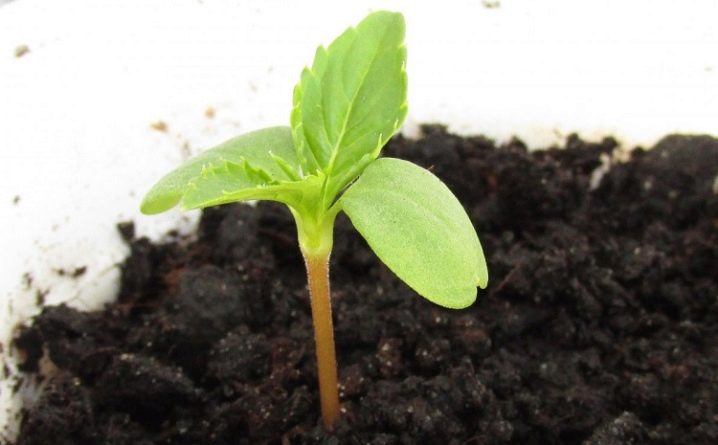
Features of seedling care
Reproduction of balsam will be successful if seedlings are dealt with daily. Taking care of seedlings at home is quite simple. Subject to all the rules, a beautiful and healthy seedling grows, which later turns into a gorgeous bush with generous flowering. Depending on the variety, the seedlings are planted in open ground or left to grow at home.
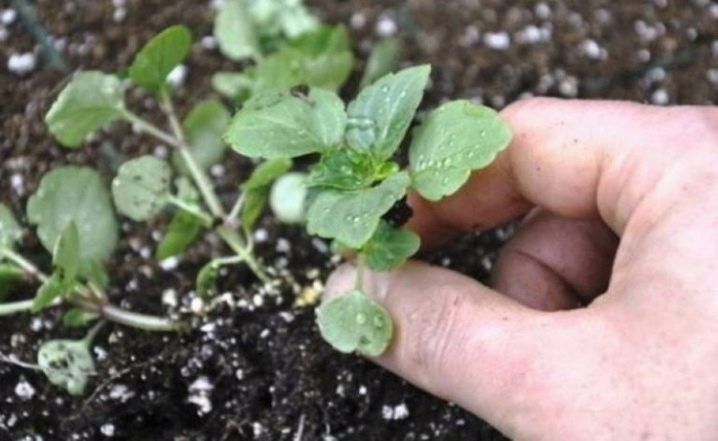
The optimal step-by-step care looks like this.
- As soon as single shoots begin to appear, the bag is opened and ventilated, and the accumulated condensate is gently shaken off so that drops of moisture do not fall on the shoots. Otherwise, there is a high probability of fungal infection of the seedlings. This procedure is carried out daily in the morning and evening.
- On the fifth or sixth day after seed germination, the package is removed completely, and the soil is moistened by spraying. In the morning and evening hours, as well as on cloudy days, it is recommended to use additional illumination of seedlings. For these purposes, fluorescent and phytolamps are used.
- If roots become visible on the surface, sprinkle them with a moistened substrate.It is best to use a pallet to moisten the soil. Then the root collars of the roots will remain dry and protected from decay.
- When the seedlings grow by 1.5 cm and, provided that it has two full-fledged leaves, they are planted in individual cups. Drainage must be placed at the bottom of the containers: expanded clay or small pebbles. The stems and root system of balsam are still fragile, so the pick must be done very carefully.
- If the plant is very elongated, then during the dive it is planted deeper. With experience, the prerequisites of plants for stretching are determined even before the onset of enhanced stem growth, the situation is corrected quickly. For example, an insufficient amount of sunlight contributes to the stretching of balsam.
- A week after the pick, the balsam seedlings must be pinched with your fingers or with scissors. This will provoke the growth of additional shoots from the axils of the lateral leaves and enhance the decorative effect of the bushes.
- In the future, balsam seedlings require moderate watering. Fertilizers are applied in small quantities, no more than once a week.
The use of complex fertilizer is possible after the appearance of the first full-fledged leaf or a week after the dive of the seedlings.
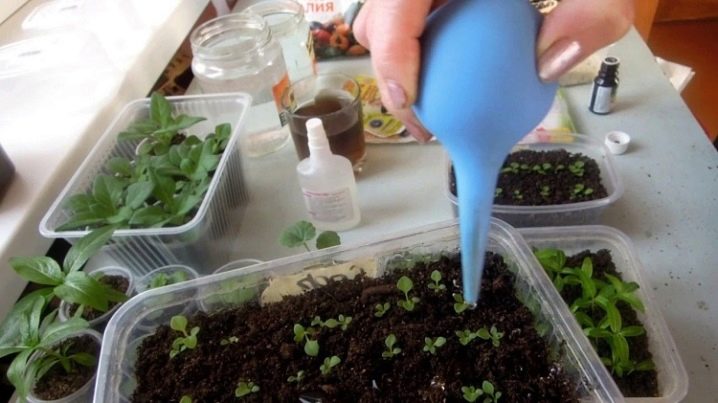
Diseases and pests
Balsam seedlings can be infected with fungal diseases. For treatment and prevention, seedlings are watered with Fitosporin fungicide. Spider mites can also attack balsam. This usually happens when there is insufficient watering.
Chemicals are used to get rid of spider mites.
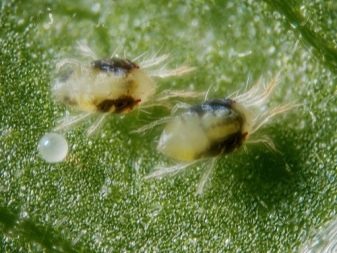

Growing seedlings in a greenhouse
Sometimes, before planting balsam seedlings in open ground, it needs growing. For mature plants, the temperature in the greenhouse during the day should be in the range from +16 to +18 degrees Celsius.
The night temperature should not drop below +15 degrees Celsius.
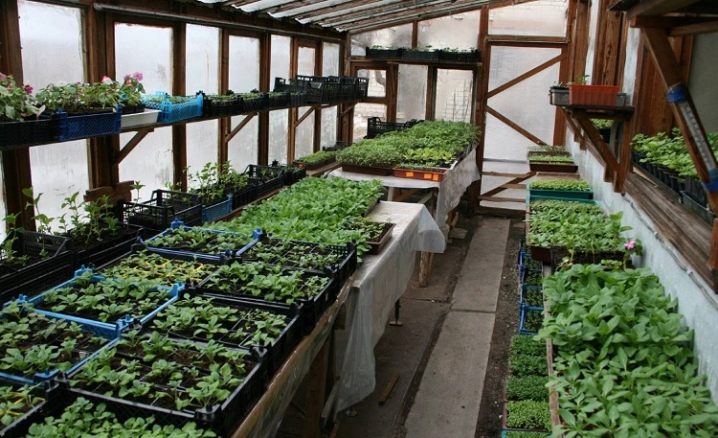































The comment was sent successfully.